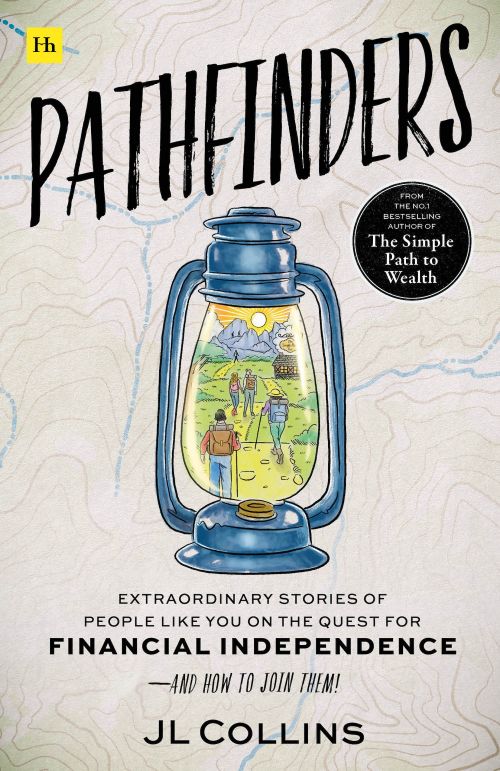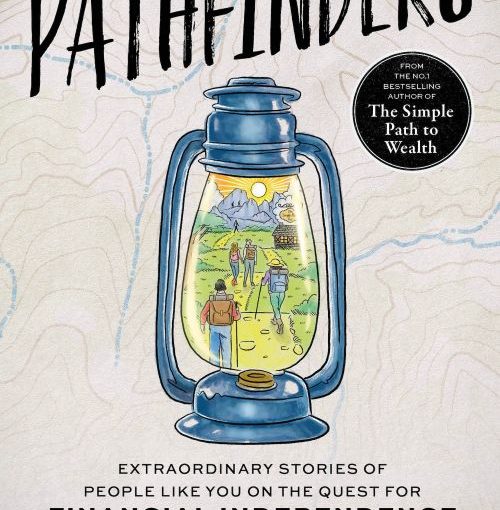I thought my wife and I were doing everything right to achieve a rich, free life. Avoid debt – check! Spend less than we earn – check! Invest the surplus – check! So, after almost two decades of investing, why weren’t we rich or at least well on our way?

This essay is published in J.L. Collins new book Pathfinders (Harriman House publishing) — a follow-on book to The Simple Path to Wealth capturing personal stories of people who applied the many financial concepts from the book. Pathfinders is available on Amazon and other places where books are sold.
When I calculated our net worth 19 years after we started investing, we had invested $103K in principal into IRAs but their value was only $92K. We had actually lost money! I had also lost $15K out of $50K invested in a taxable mutual fund account and all of the $5K invested in individual stocks.
I thought I had done my homework. I had read an investment book, read several articles on investing, and sought advice from friends, but it wasn’t until I read J.L. Collins’ book The Simple Path to Wealth that I finally understood that my investing problem was…me.
I have been frugal and a great saver my whole life but, as you can tell already, I was a terrible investor. J.L.’s description of the “typical investor”– who panics and sells when the market takes a tumble, waiting to reinvest cautiously long after the market recovers – described me perfectly.
In 1992, when I was a young lieutenant in the US Air Force, I understood that investing in stocks for the long term was the path to financial success. My wife and I each opened a traditional IRA (this was before Roth IRAs) and invested in mutual funds.
With monthly automatic purchases, we invested the annual limit and put the rest in a savings account. After 5 years, our $17K invested had grown to over $90K and our savings was over $90k. So far so good, right? But, then along comes yours truly. Here are the most egregious examples of my rocky investing.
Individual Stock Picking Fail
In 1997, I purchased 1,000 shares of Boston Chicken (later known as Boston Market). We had recently lived in Boston and I loved our nearby Boston Chicken restaurant. I was convinced that home meal replacement was a growing trend and thus a great investment.
Unfortunately, the company was cooking more than delicious chicken. Just weeks before I purchased the stock (and unbeknownst to me), the company revealed it was recycling money by loaning to its franchisees to build new restaurants, masking its true, troubling financial picture–huge debt.
Boston Chicken soon filed for bankruptcy. I watched that stock drop from around $5 per share to pennies as the company financially collapsed. Believing that I simply needed to learn more about stock investing, I read The Motley Fool Investment Guide. It was no fun to read their take that delicious chicken does not necessarily make a great investment. I learned picking individual stocks can be very risky.
Buy High, Sell Low?
Not to be deterred, I continued to closely watch the markets for three years, saw their year-over-year gains, and thought: We can’t miss out on the tech stock boom any longer. So, in January 2000, after the Y2K scare passed but right before the dot.com bubble burst, I invested a quarter of our net worth ($50K) into mutual funds (half in a tech fund and half in an S&P 500 index fund).
Yep, I bought high, joining the excitement of a hot market. But the value of my shares burst along with the bubble. I held them for a measly four years, and when there was little to no recovery, I sold our shares, locking in a $15K loss.
I didn’t yet understand how to hold and wait for recovery. In fact, many of the remaining companies, such as Amazon and eBay, would eventually fully recover and make a lot of money. Sigh. Luckily, we left alone our only remaining investments–our IRAs–and they continued to grow… until the Great Recession hit.
In September 2008, when the Great Recession was in full swing and the stock market was way down, I convinced myself and my wife that we needed to pull our IRA investments to safety and avoid further “losses.” So with much angst, I transferred our IRAs into money market funds and locked in losses of approximately 25% percent each.
The recession made me wary of the market, so I kept our investments in money market accounts until February 2014, when I felt I couldn’t let the market rise without us any longer. By then, the market had long recovered, but my jitters remained. I was certain (as were many pundits) that the market would once again drop.
There Has to Be a Better Way
Finally, in early 2018, I found the Financial Independence movement and took on a new perspective of how to build our financial future. I discovered J.L. Collins on the ChooseFI podcast. I checked out The Simple Path to Wealth from my local library and read it from cover to cover. I gave it to my wife. I bought copies to share with my kids and friends.
Reading the book felt like J.L. was speaking to me directly, as if he knew me personally and my poor investing history. His approach is so simple, yet it eluded me for years. Armed with J.L.’s wise words (we began to think of him as “Uncle J.L.”), I now understood the importance of investing in broad-based index funds, paying low investment fees, and giving like a billionaire. But most importantly, I learned how to hold (and even buy) when the market is falling and sell (rebalance) when it is up.
Testing My New Resolve
My first big test was in March 2020 when the COVID-19 pandemic hit and the market plummeted. In the past, I would have pulled out my money after it dropped precipitously, but now I had Uncle J.L. over my shoulder reassuring me to stay the course.
I didn’t sell. In fact, I confidently optimized our available investment dollars and shifted into more stock. I now trusted that, eventually, the market would rise again.
In early January 2022, I rebalanced our portfolio, selling stocks at their peak and buying government securities (I needed to wait on bonds as interest rates were rising). In early June 2022, when the market dropped 15%, I shifted funds from government securities to buy stocks “on sale.”
When it further dropped into bear market territory, I purchased more stocks at a deeper discount. If it drops past 25% or even 30%, I’ll do it again. Since reading The Simple Path, our stock portfolio has increased by 60% and we have achieved financial independence.
I am no longer investing with angst and a trail of lost opportunities. Now, my wife and I are investing thoughtfully, our eyes on the horizon, confident the market will eventually recover. Our two children, both in their early 20s, are getting a great start to a lifetime of smart investing. Thanks, Uncle J.L.
Thanks for reading! If you would like to be notified of new posts or updates from Living The FIgh Life, please subscribe below. I am an inconsistent blogger (hey, I'm retired!) so this is the best way to be notified of new content. Cheers!
![]()
